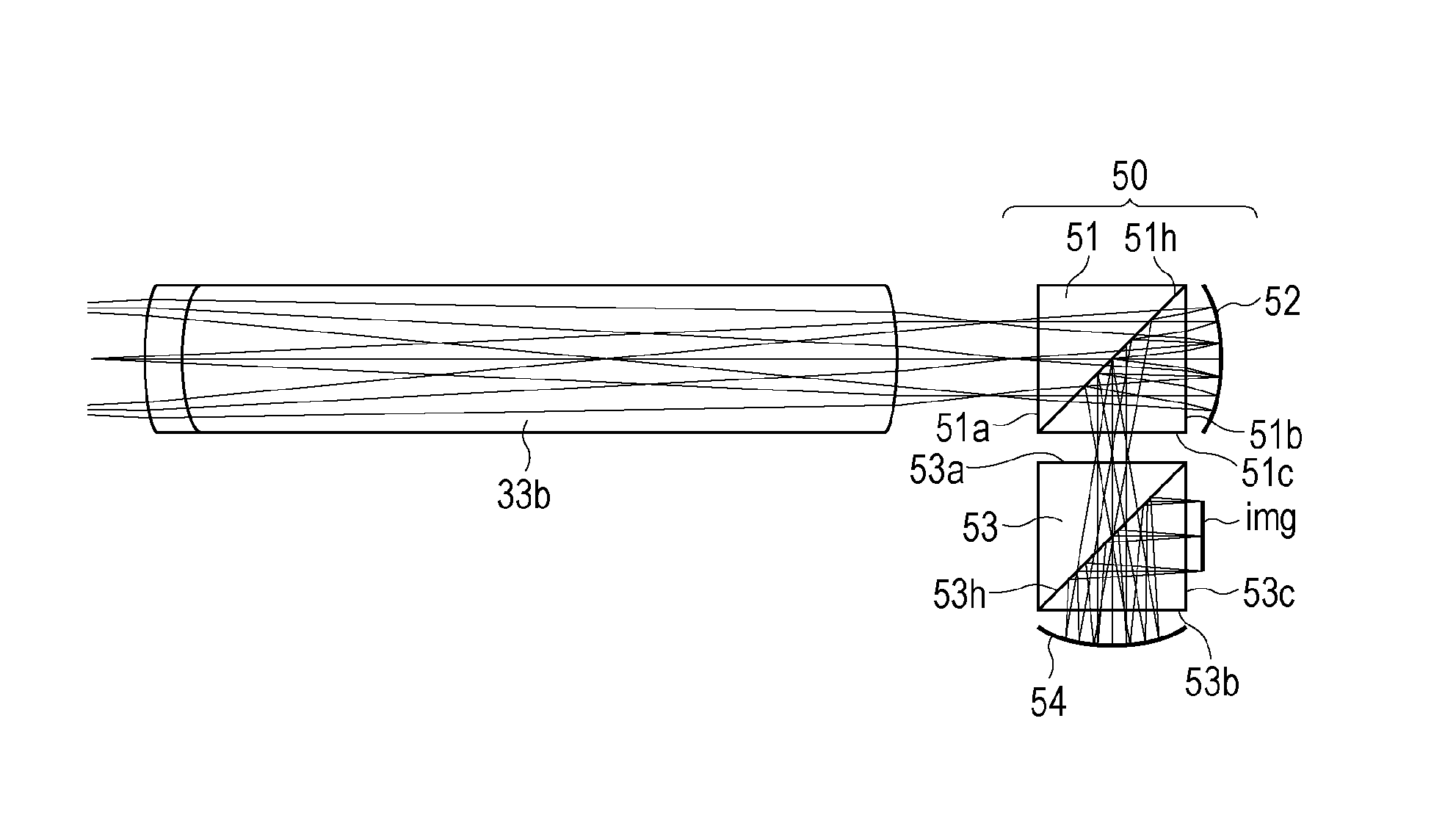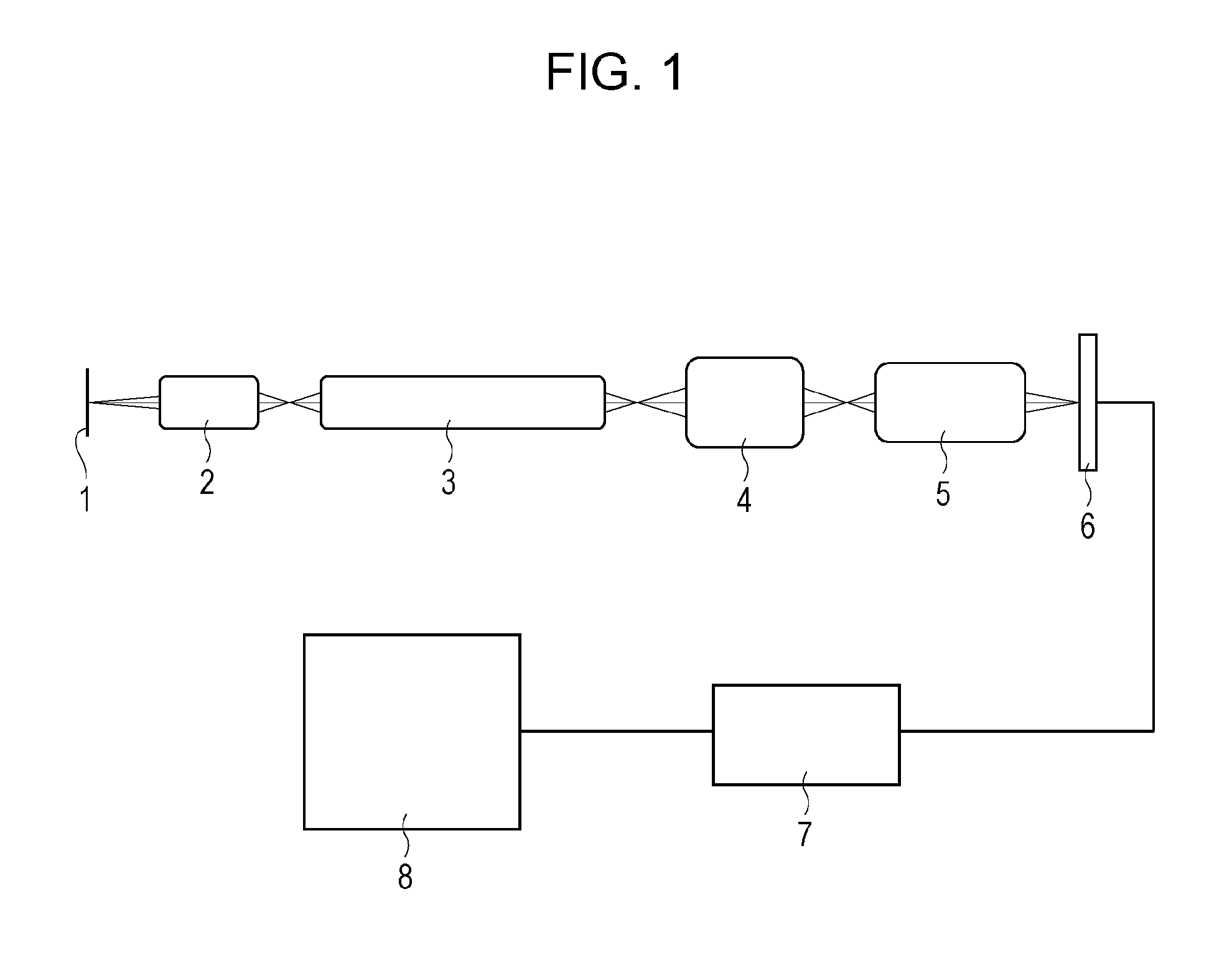Optical system for endoscope and endoscope
an endoscope and optical system technology, applied in the field of optical systems for endoscopes, can solve the problems of curvature of field remains, degradation of imaging performance, degrade performance, etc., and achieve the effect of desirable optical performan
- Summary
- Abstract
- Description
- Claims
- Application Information
AI Technical Summary
Benefits of technology
Problems solved by technology
Method used
Image
Examples
first embodiment
[0039]A first embodiment is described with reference to FIGS. 1 to 6. FIG. 1 is a schematic view of a main portion of an optical system for an endoscope according the present embodiment. Referring to FIG. 1, reference numeral 1 denotes an object, reference numeral 2 denotes an objective lens, reference numeral 3 denotes a relay lens, reference numeral 4 denotes a correction optical system, reference numeral 5 denotes an imaging lens, and reference numeral 6 denotes an image pickup device. In FIG. 1, the object 1 is illuminated with a lighting optical system (not shown), and an image of the object 1 is formed by the objective lens 2 disposed near the object 1. The formed image is optically transmitted through the relay lens 3 and passes through the correction optical system 4. After that, the image of the object 1 is formed again on the image pickup device 6 by the imaging lens 5. The image of the object 1 picked up by the image pickup device 6 is displayed in a display device (not s...
second embodiment
[0047]A second embodiment is described with reference to FIGS. 7 to 9. Portions other than the correction optical system are similar to those of the first embodiment.
[0048]FIGS. 7A and 7B are sectional views of the relay lens 3 and a correction optical system 50. Specifically, FIG. 7A is a sectional view illustrating an outline of the relay lens 3 and the correction optical system 50, and FIG. 7B is an enlarged sectional view illustrating the correction optical system 50, a region around the correction optical system 50, and optical paths. The relay lens 3 is similar to that used in the first embodiment. Referring to FIG. 7A, a surface denoted as “obj” on the distal end side of the relay lens 3 is an object plane of the relay lens 3 and an image plane of the objective lens 2. The correction optical system 50 is disposed on the proximal end side (right side in FIGS. 7A and 7B) of the relay lens 3. Referring to FIG. 7B, the correction optical system 50 includes a beam splitter 51 as a...
third embodiment
[0056]A third embodiment is described with reference to FIGS. 10 to 12. Portions other than the correction optical system are similar to those of the first embodiment.
[0057]FIG. 10 is an enlarged sectional view illustrating a correction optical system 60, a region around the correction optical system 60, and optical paths. Referring to FIG. 10, the correction optical system 60 includes a beam splitter 61, an aspherical lens 62, and a concave mirror 63. Light beams pass through the rod lenses of the relay lens from lens to lens in order and converge after passing through the rod lens 33b. After that, the light beams enter the beam splitter 61 from a surface 61a, pass through a surface 61h, and exit the beam splitter 61 from a surface 61b. Then, the light beams pass through the aspherical lens 62 and are incident upon the concave mirror 63. The light beams are reflected by the concave mirror 63, pass through the aspherical lens 62 again, enter the beam splitter 61 from the surface 61b...
PUM
 Login to View More
Login to View More Abstract
Description
Claims
Application Information
 Login to View More
Login to View More - R&D
- Intellectual Property
- Life Sciences
- Materials
- Tech Scout
- Unparalleled Data Quality
- Higher Quality Content
- 60% Fewer Hallucinations
Browse by: Latest US Patents, China's latest patents, Technical Efficacy Thesaurus, Application Domain, Technology Topic, Popular Technical Reports.
© 2025 PatSnap. All rights reserved.Legal|Privacy policy|Modern Slavery Act Transparency Statement|Sitemap|About US| Contact US: help@patsnap.com



